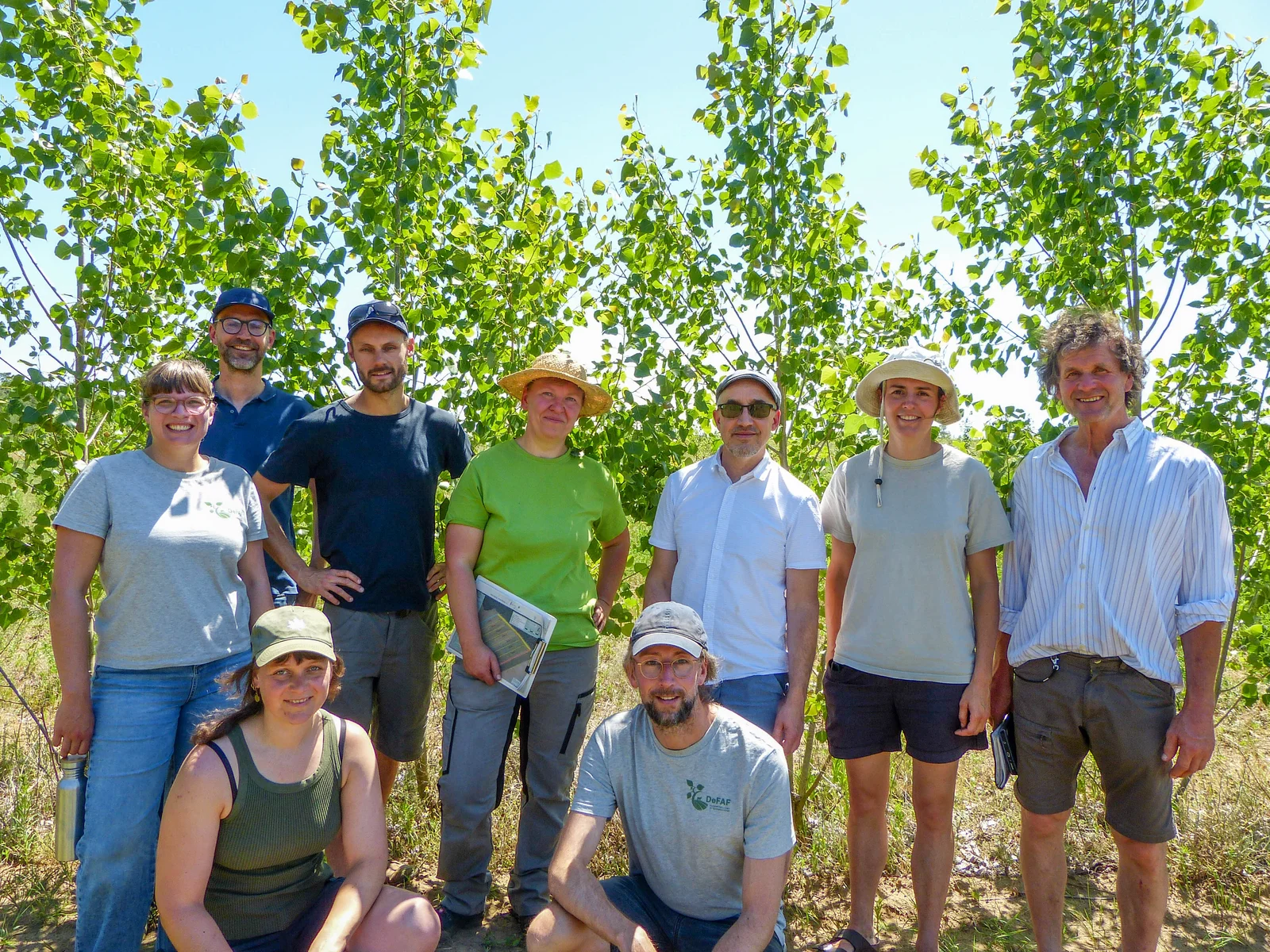Dry soils - resilient trees: Walnut & Co. in a practical test
With the aim of developing sustainable solutions for agriculture in increasingly dry regions, the Eberswalde University for Sustainable Development (HNEE) is launching a new research project: Climate-Resilient Agroforestry Trees for Drought-Prone Regions. In collaboration with three farms from Brandenburg and Saxony-Anhalt, promising agroforestry systems featuring climate-resilient tree species will be trialled.

At the official project launch today, all partners gathered at Warnke Agrar farm in Cobbel (Altmark) to discuss the next steps for successfully establishing agroforestry systems within the framework of the project. In these so-called agroforestry systems, woody plants such as walnut, sweet chestnut, and mulberry are planted in strips integrated into agricultural land. These systems are promising because they reduce soil erosion, improve the microclimate, promote biodiversity, and create long-term economic opportunities for farms — for example, through additional timber and fruit yields.
However, farmers in the dry regions of eastern Germany who want to implement agroforestry face significant challenges. Increasing spring droughts — as seen this year — have resulted in high failure rates among young trees. This is exactly where the research project steps in.
What will the tree of the future bring?
Scientists at HNEE aim to determine whether the careful selection of tree species and different nursery cultivation techniques can improve the establishment success of young trees under drought stress. Approximately 200 trees will be planted in December 2025 at each of three partner farms: Sonnengut Gerster in Dietrichsroda (Burgenlandkreis), Warnke Agrar in Cobbel (Altmark), and Biohof Kepos in Heinrichsfelde (Ostprignitz).
The project focuses on walnut, sweet chestnut, and mulberry — species known for their drought tolerance and ability to produce marketable fruit alongside timber.
Quote from the project:
“Industrial agriculture has reached a dead end,” says farmer Christian Warnke from Cobbel. “We need to rethink agriculture in a landscape-oriented way. A diverse mosaic of usable woody plants and open fields can create stable ecosystems. By breaking down the rigid boundaries between forest and farmland, we can open up new economic prospects and create more livable landscapes — for people, animals, and plants alike.”
The project is scientifically monitored and documented, aiming to provide practical recommendations for farmers who want to make their farms climate-resilient and future-proof. Funding is provided by the German Federal Environmental Foundation (Deutsche Bundesstiftung Umwelt).